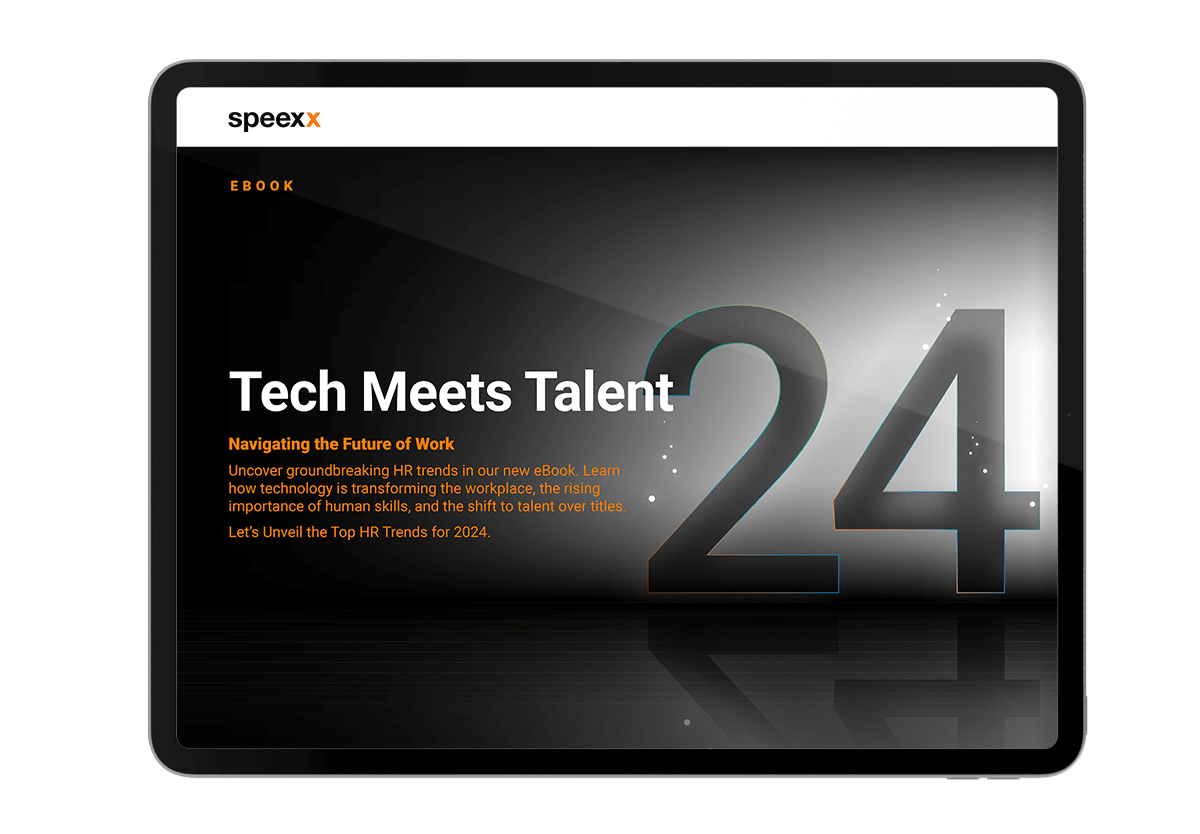“Why has our team’s productivity dipped?”
“Why is Sam’s sales performance down from last year?”
“Why haven’t we seen a positive change, despite bringing in new talent?”
These are common questions usually on the lips of most HR professionals, managers, and team leaders grappling with perhaps their biggest challenge: how to increase employee productivity effectively while avoiding additional stress or risking burnout.
In the context of 2024, where the Great Resignation still looms large and talks of Quiet Quitting persist, HR and L&D professionals face a critical challenge: balancing organizational needs with those of employees and colleagues. The question arises: how do we cultivate a culture of working by objectives, without employees becoming “bogged down” in excessive meetings or delayed task completion?
In this article you will learn four actionable strategies designed for HR and L&D professionals and managers to optimize workplace productivity. We begin by demystifying the often-misunderstood concept of productivity, equipping you with the knowledge and tools to ensure a harmonious and efficient work environment.

Understanding Productivity in the Workplace
Productivity, at its core, measures an employee’s ability to produce outcomes. Traditionally, this measurement has been quantitative, such as a salesperson closing X number of deals per month, or a call center agent managing a high volume of calls efficiently.
However, this perspective is somewhat limiting; it can also be misleading, particularly when considering knowledge workers such as editors or community managers. These professionals engage in creative and intellectual tasks—creating, thinking, studying, and networking—that don’t yield immediate, tangible products. Their productivity is less concerned with volume of output and more about the quality and impact of their work.
For knowledge workers, productivity is not so much about hitting numerical targets but meeting or exceeding expectations through high standards of work. It’s crucial for HR managers to recognize and evaluate productivity not just by numbers but by the value and innovation employees bring to their roles.
Effective productivity management involves balancing quantitative benchmarks with qualitative assessments to foster a culture where all types of work are valued and encouraged. This approach ensures that employees are recognized for their contributions, irrespective of the nature of their tasks, promoting a more holistic and supportive workplace culture. Part I of the Speexx Top Trends 2024 eBook delves further into the changing metrics of productivity.

Find out what the key points are for measuring productivity in 2024
Rethinking Productivity: Quality Over Quantity
The Misunderstood Dimension of Productivity
Productivity’s traditional definition remains somewhat binary, tied to the industrial age’s focus on the amount of work done over a specific period. However, for modern HR managers seeking to cultivate a truly efficient and equitable workplace, understanding productivity’s qualitative aspects is crucial.
The Essence of Productivity
An employee might produce a high volume of work, but without aligning with the company’s objectives—such as engaging a specific audience, enhancing the brand’s reputation, or contributing to the company’s positioning—quantity alone does not necessarily equate to productivity. Therefore, it’s essential to evaluate not just how much work is done, but the impact and quality of that work.
Quality: The Core of Productivity
A productive individual generates high-quality outputs that directly or indirectly boost the company’s revenue over time. This is particularly relevant for knowledge workers, whose contributions to revenue might not be immediately apparent but are nonetheless vital for long-term growth. HR managers should recognize and cultivate conditions that enable employees to produce such quality work, emphasizing that productivity means more than just time spent at work and/or corresponding sales figures; the value of certain types of productivity is often seen in outcomes that are not so easily quantifiable, such as enhanced brand reputation or broader market penetration
Productivity from Both Perspectives
Employees themselves differentiate between productive and unproductive days, often based on their ability to accomplish planned tasks. However, productivity isn’t solely about task completion. Days spent in meetings might seem unproductive, yet if these discussions help streamline processes or resolve longstanding issues, they are indeed productive. It’s crucial for HR to acknowledge and support activities that, while not directly task-related, contribute significantly to the team’s overall effectiveness.
For HR managers, enhancing workplace productivity means looking beyond hours logged and tasks completed. It involves nurturing an environment where quality and effectiveness are valued alongside efficiency. By doing so, companies can achieve sustainable growth and ensure that their employees’ work truly contributes to broader organizational goals.
4 Simple Strategies to Increase Employee and Contractor Productivity
Below are four practical strategies HR managers can use to enhance productivity among employees and sub-contractors.
1. Set Clear and Measurable goals
In the evolving workplace landscape, where smart working models are becoming the norm, traditional office-based work structures are being redefined. The term “smart working” is often mistaken for mere remote working; however, it actually signifies a shift towards a results-oriented work culture, where the emphasis is not on the hours spent or the location but on achieving specific objectives.
Clarify Goals vs. Tasks.
It may seem straightforward, but setting clear goals is a challenge many organizations face. There’s a common confusion between daily tasks and overarching goals. While tasks are the steps taken towards an objective, goals are the destinations we aim to reach through these actions. For instance, a salesperson might view “increasing sales” as their goal. Yet, without context—such as which products to focus on or which customer segment to target—this goal remains too vague to be truly actionable.
Be Specific
For goals to be effective, they must be clearly defined and communicated to all team members. This preciseness allows employees to focus on the desired outcomes and devise strategies to achieve them. An effective method for ensuring goal clarity is adopting the SMART criteria, which dictates that goals should be Specific, Measurable, Achievable, Realistic, and Time-bound. This approach not only provides clear direction but also aligns with employees’ expectations, capabilities, and motivations.
Implement SMART Goals
By embracing the SMART framework, HR managers can promote a more focused and productive work environment. This transparency in goal setting is invaluable, as it helps individuals understand their roles more clearly and aligns their efforts with the organization’s objectives.
In summary, transitioning from a task-oriented to a goal-oriented mindset is crucial in today’s flexible work culture. Clear, measurable goals empower employees to contribute more effectively to their team’s success, driving overall organizational productivity.

Get a snapshot of the hottest topics in HR today to keep up to date with the industry’s most relevant conversations.
2. Timely Feedback Enhances Productivity
A robust feedback process is crucial for boosting productivity within organizations. Yet, the practice of providing feedback is often limited to annual reviews or, at best, semi-annual or quarterly meetings. This approach overlooks the importance of continuous feedback—regular, real-time insights provided throughout project cycles.
Continuous feedback drives an employee’s progress towards goals, supports open communication and prompt correction of any misunderstandings or errors arising from insufficient dialogue.
Effective feedback should be reciprocal. It’s not solely the prerogative of management to offer insights; employees must also feel empowered to share their experiences and challenges. This two-way communication channel not only demystifies performance expectations but also enhances team cohesion and individual job satisfaction.
3. Enhance Communication: Tailor Strategies to Contexts
In today’s corporate environment, where emails, instant messages, and digital platforms like Teams and Wrike dominate, communication paradoxically often becomes hasty, superficial, and overlooked. This issue permeates all levels of interaction: among team members, between managers and employees, and in dealings with customers.
The key to addressing this is to pause and consider not just what we want to communicate, but how to do so most effectively. Let’s explore strategies tailored to different contexts.
How to Communicate
Detailed Information
When the goal is to share intricate data, such as marketing-generated leads, opt for a two-pronged approach. Begin with an email notification for an upcoming meeting. This email should:
- Have a concise, keyword-rich subject line positioned to capture immediate attention.
- Clearly outline the meeting’s purpose, logistics (where, how, and when it will occur), the facilitator’s name, expected duration, and a detailed agenda.
- Include preliminary data to allow participants to familiarize themselves with the content ahead of time.
Send this communication at least 3-4 days in advance, ensuring attendees have sufficient time to prepare.
Face-to-Face
For sensitive and impactful interactions like annual performance reviews, prioritize face-to-face or video calls. This approach supports direct, meaningful engagement, allowing for immediate feedback and discussion. Asynchronous (non-immediate) communication methods, including email and messaging, or even phone calls, should be avoided to ensure a more comprehensive, nuanced, and human exchange.

4. Enhance Productivity Through Business Coaching
Business coaching is highly valuable strategy for boosting workplace productivity. It serves not only as a tool for effective people management but also as a means to refine and harness the essential skills and talents necessary for optimal communication. How does it work? In a coaching session, a coach assists an employee in pinpointing their strengths and weaknesses, thereby enabling him/her to improve their interpersonal relationships within the professional environment.
Moreover, business coaching is instrumental in mastering the art of feedback delivery. It fosters a culture of continuous improvement, where employees are motivated to take charge of their personal development. This culture is key to enhancing overall productivity, as it encourages everyone to contribute to their fullest potential.